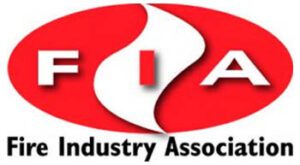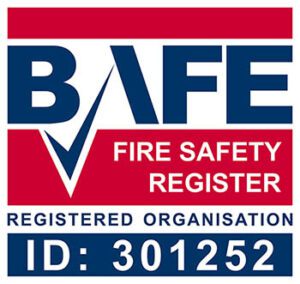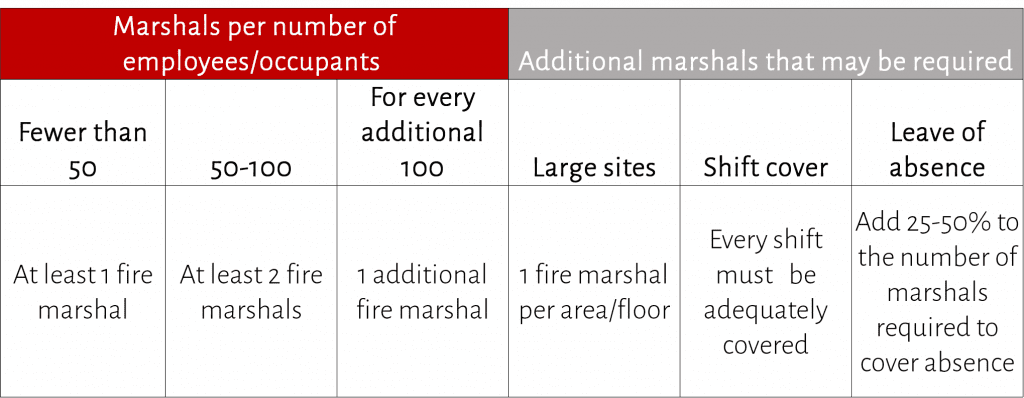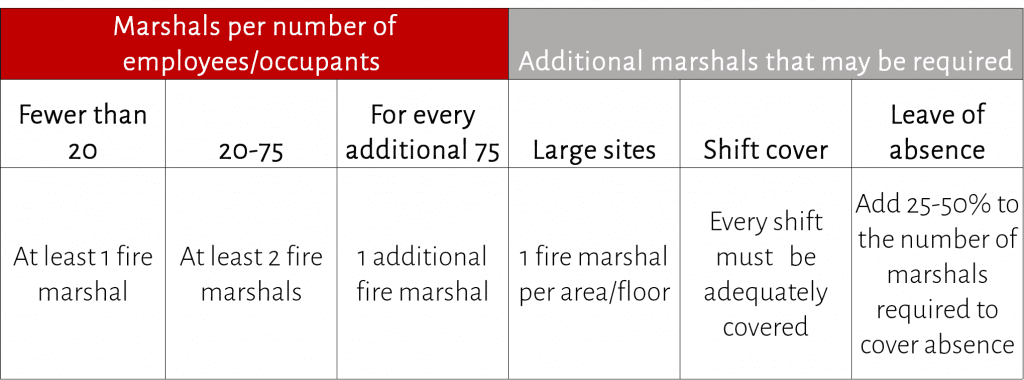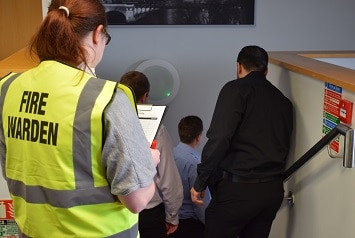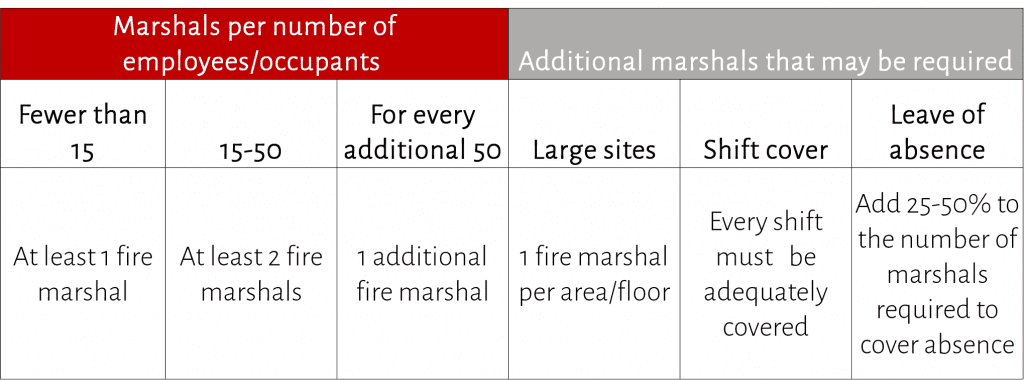The number of fire marshals you need depends on the nature and size of your organisation.
‘How many fire marshals do I need?’ is a question we often get asked by our business customers.
That’s why we’ve pulled together this simple guide to help you work out exactly how many marshals you need in the workplace.
How many fire marshals should be in a workplace? The truth is – there is no set number, so it all depends.
Firstly, decide if you are a low risk, normal risk or high risk business. The level of fire risk in your business will dictate how many fire marshals you should have.
One caveat here though: there is no legal definition of low, normal or high risk with regards to fire safety as it depends on many factors.
If you feel unqualified to determine the risk level of your premises, or uncomfortable doing so, then check your Fire Risk Assessment, as it should have classified your premises for you.
When calculating the fire risk of a premises we need to take into account two main things:
1) ‘hazards’ – how likely is it that a fire will occur, and
2) ‘severity’ – how damaging could a fire be if it did occur.
Find out about our Fire Marshal Training course.
Low fire risk
Where there is hardly any risk to life safety because some or all of the following are true:
- there are few combustible or highly flammable materials
- there are virtually no sources of heat which could ignite a fire
- the premises are well maintained and traditionally built, e.g. of brick and stone
- there are no high risk groups of individuals, such as the young, elderly, or disabled
- occupants could escape quickly and safety in the event of a fire
- fire safety measures are adequate and well maintained
Notes & Examples: only a small number of premises will fall into this category, examples being a stonemason’s workshop and some small shops and offices.
Normal fire risk
Where there is an average risk to life safety because some or all of the following are true:
- there are some quantities of combustible or highly flammable materials
- there are some sources of heat which could ignite a fire
- the premises may not be traditionally built
- there is a small number of high risk individuals, such as the young, elderly, or disabled
- a fire is likely to remain confined or to spread slowly, allowing people time to escape
- fire safety measures are adequate and well maintained
Notes & Examples: most premises fall within this category e.g. bigger offices and shops, warehouses, and most factories and light engineering plants.
High fire risk
Where there is a serious risk to life safety because some or all of the following are true:
- there are substantial quantities of combustible or highly flammable materials
- there are sources of heat which could easily ignite a fire
- there is an unconventional layout or construction making it harder to exit easily
- a fire could spread rapidly
- there is a large number of high risk individuals, such as the young, elderly, or disabled
- fire safety measures are poor
Notes & Examples: generally these premises fall into 2 categories:
1) those where there is a high risk of a fire occurring, such as restaurants or catering kitchens, industrial premises which house flammable liquids or gases, or use a lot of heat in their processes, and –
2) those where it would be difficult for the occupants to escape, either because of the nature of the occupants, such as in hospitals, care homes, childcare nurseries and schools; or because of the convoluted layout of the building, such as in some HMOs (‘homes of multiple occupation’).
Low risk premises – fire marshal requirements:
The table below indicates the recommended number of marshals for low risk business premises:
Example
A stonemason’s has a workshop and a separate office area which manages its online shop. The workshop employs 7 people, including 2 who work on the weekend. The office employs 3 people, who work Monday-Friday 9am-5pm.
In this instance we would recommend nominating 5 fire marshals:
- 2 in the workshop, 1 for each shift
- 1 in the office
- 2 to cover absences
Normal risk premises – fire marshal requirements
The table below indicates the recommended number of marshals for normal risk business premises:
Example:
A large office building has 3 floors, a cafeteria and a reception area. There are 280 employees in the offices, 90-100 on each floor, 15 people in the cafeteria working 2 shifts, and 5 people working in the reception area.
In this instance we would recommend nominating 13 fire marshals:
- 6 in the office area – 2 on each floor
- 2 in the canteen – 1 per shift
- 1 in the reception area
- 4 to cover absences
High risk premises – fire marshal requirements
The table below indicates the recommended number of marshals for high risk business premises:
Example
A busy restaurant has a kitchen and a dining area. The kitchen has 30 employees working 3 shifts, and the dining area has 8 staff working 2 shifts, plus seats up to 40 customers.
In this instance we would recommend nominating 14 fire marshals:
- 6 in the restaurant area – 2 for each shift
- 4 in the dining area – 2 per shift, to cover both employees and customers
- 4 to cover absences
Hopefully, now you have a clearer picture of how many fire marshals you need.
Perhaps in a different way than fire extinguishers and wired or wireless fire alarm systems, but your fire marshals are still a key part of your fire safety plan, and have a number of important duties which will help keep your employees and customers safe from fire.
Find out more about what a fire marshal does.
Find out about our Fire Marshal Training course.
Learn all about fire regulations for offices.


